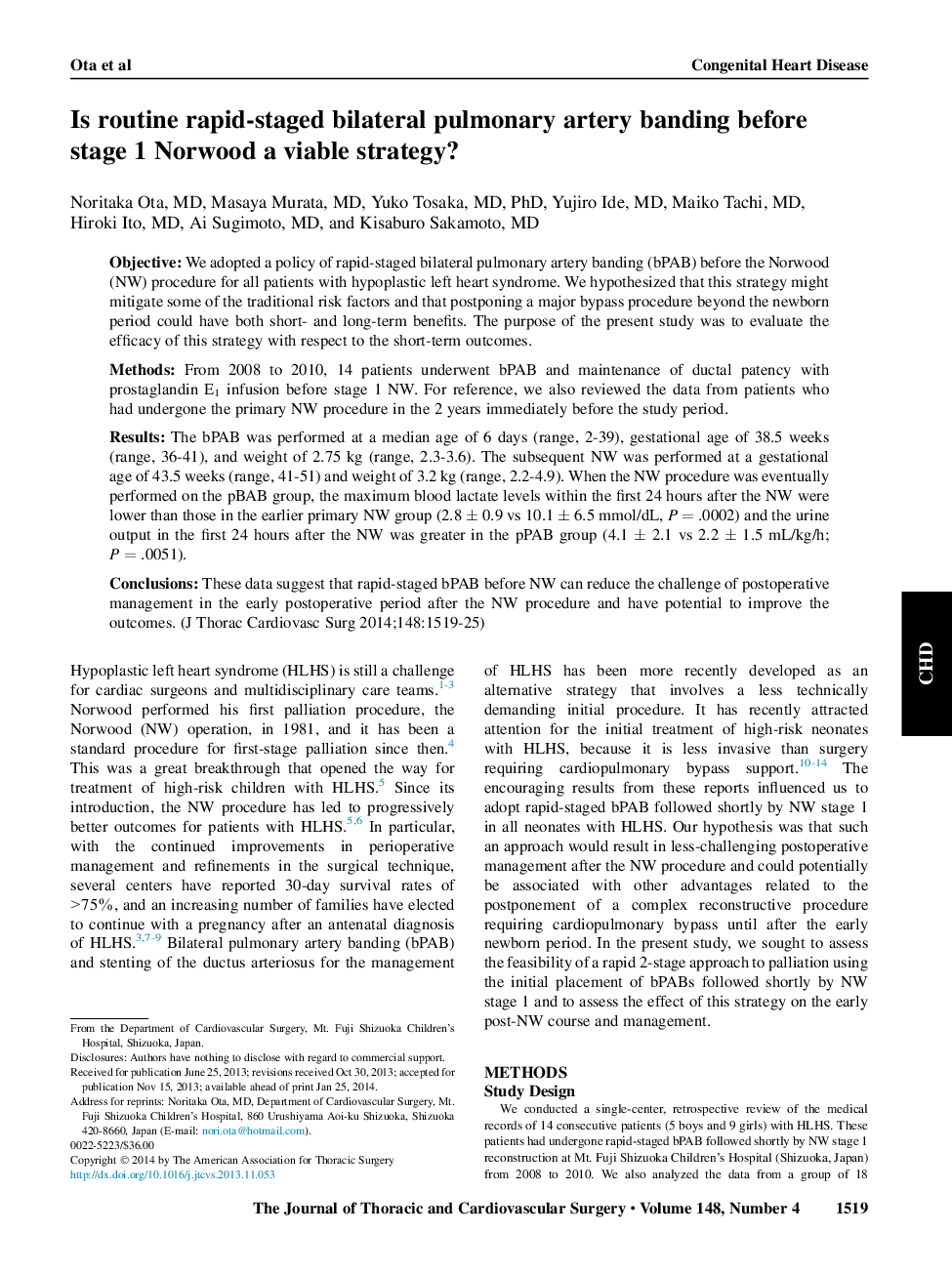| Article ID | Journal | Published Year | Pages | File Type |
|---|---|---|---|---|
| 2980414 | The Journal of Thoracic and Cardiovascular Surgery | 2014 | 7 Pages |
ObjectiveWe adopted a policy of rapid-staged bilateral pulmonary artery banding (bPAB) before the Norwood (NW) procedure for all patients with hypoplastic left heart syndrome. We hypothesized that this strategy might mitigate some of the traditional risk factors and that postponing a major bypass procedure beyond the newborn period could have both short- and long-term benefits. The purpose of the present study was to evaluate the efficacy of this strategy with respect to the short-term outcomes.MethodsFrom 2008 to 2010, 14 patients underwent bPAB and maintenance of ductal patency with prostaglandin E1 infusion before stage 1 NW. For reference, we also reviewed the data from patients who had undergone the primary NW procedure in the 2 years immediately before the study period.ResultsThe bPAB was performed at a median age of 6 days (range, 2-39), gestational age of 38.5 weeks (range, 36-41), and weight of 2.75 kg (range, 2.3-3.6). The subsequent NW was performed at a gestational age of 43.5 weeks (range, 41-51) and weight of 3.2 kg (range, 2.2-4.9). When the NW procedure was eventually performed on the pBAB group, the maximum blood lactate levels within the first 24 hours after the NW were lower than those in the earlier primary NW group (2.8 ± 0.9 vs 10.1 ± 6.5 mmol/dL, P = .0002) and the urine output in the first 24 hours after the NW was greater in the pPAB group (4.1 ± 2.1 vs 2.2 ± 1.5 mL/kg/h; P = .0051).ConclusionsThese data suggest that rapid-staged bPAB before NW can reduce the challenge of postoperative management in the early postoperative period after the NW procedure and have potential to improve the outcomes.
